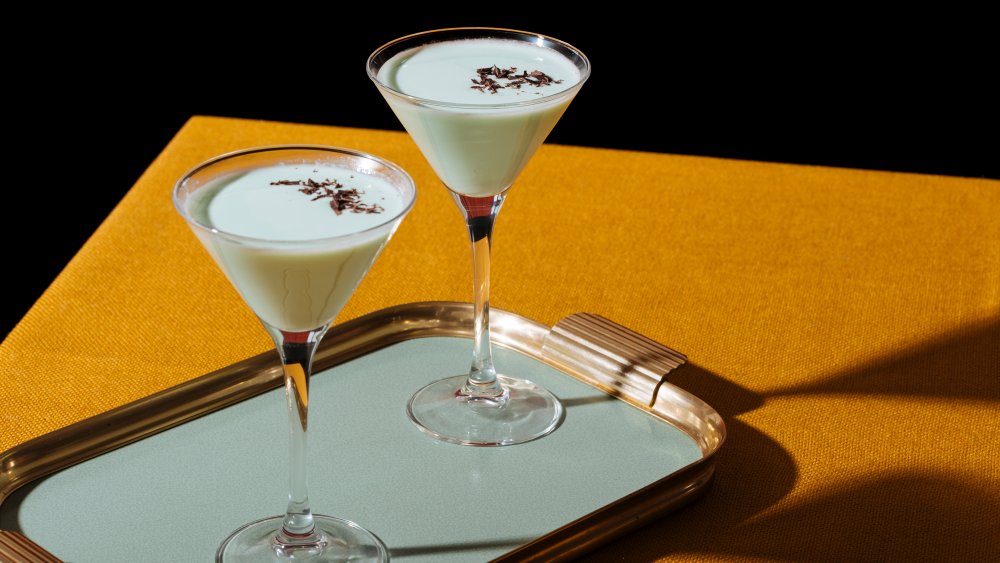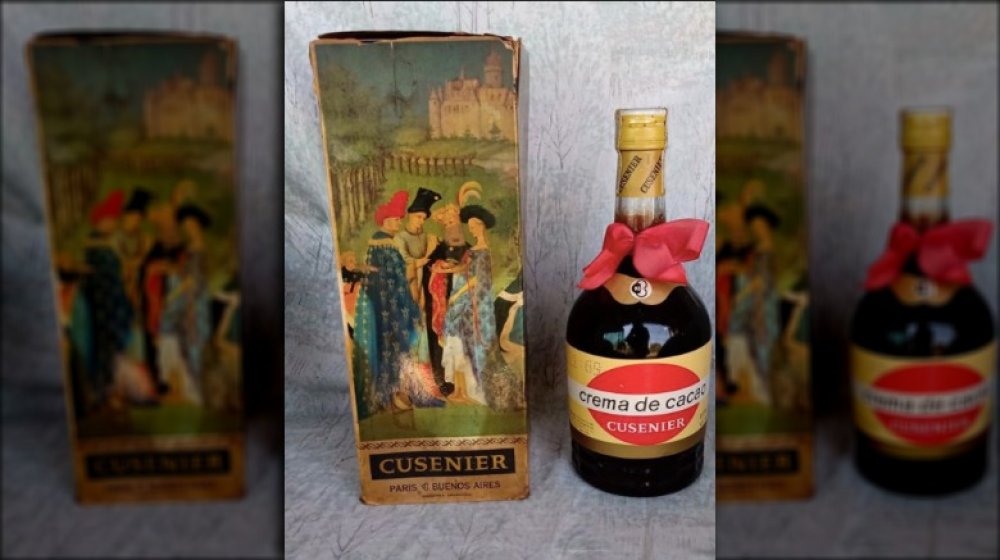What You Need To Know About Creme De Cacao
When you think of creme de cacao, super sweet cocktails and dessert drinks that call for the chocolate liqueur might be the first thing to come to mind, but there's actually a long history behind the liqueur. In fact, it's been around for centuries — and not just as an ingredient in your chocolate martini. According to Tales of the Cocktail, Creme de cacao is thought to have been one of the first alcoholic beverages, coming from monastic experiments in the 1600s after cocoa beans had been brought back to Europe from the Americas. Back then, monks were brewing tonics and wormwood wines for medicinal purposes, and along the way they seem to have made creme de cacao.
Today, the liqueur actually comes in a few different forms, which vary based on how they're made: percolated or distilled. Bartender and consultant Philip Duff explained to the outlet, "Percolated, just like making coffee, is where you have a filter and you fill it up with cacao beans, and instead of dripping water through it, you drip alcohol." This type of creme de cacao tends to be darker with a rich, bitter cocoa flavor. Distilled creme de cacao is made by physically distilling the cacao, and then macerating the distillate with even more cacao and possibly vanilla beans as an aromatic. This is white or blanc creme de cacao, and is clear in color with a milk chocolate flavor, though it contains no dairy.
How creme de cacao is best used now
Creme de cacao got a bad rap in for being key to sweet drinks. "The first time I encountered creme de cacao, it was not being used properly," said Seth Freidus of Alden & Harlow; the drinks weren't balanced. Henry Prendergast, the Beverage Director at Chicago's Analogue, said "Creme de cacao definitely has a kitsch factor, which can be good in small doses... I think [it's] great tempered with something a bit more bitter and austere... where the acid can balance out the richness of the syrup" (via Punch).
To prevent the drink from becoming too sweet, it can be beautifully paired with gin, Lillet Blanc, and lemon juice in a Twentieth Century cocktail. Herbal components are also a good pairing for the liqueur, according to Friedus. However, which kind of creme de cacao you use changes what it is best paired with. Many bartenders find the dark variety of creme de cacao to have an off-putting, artificial taste, though some feel brand Tempus Fugit has made it successfully. One bartender, Jamie Boudreau, combines creme de cacao with bourbon, grenadine, and lemon in a drink called the Commodore. In another, dark creme de cacao is married with Bols genever, rum, and Earl Grey-infused vanilla hemp milk, and finished with bitters, boba, and salt. "The maltiness of the Bols marries perfectly with the cacao, and the vanilla hemp milk rounds everything out," Boudreau said. To him, it's a modern take on what bartenders were shaking up before the dessert martini arrived.

